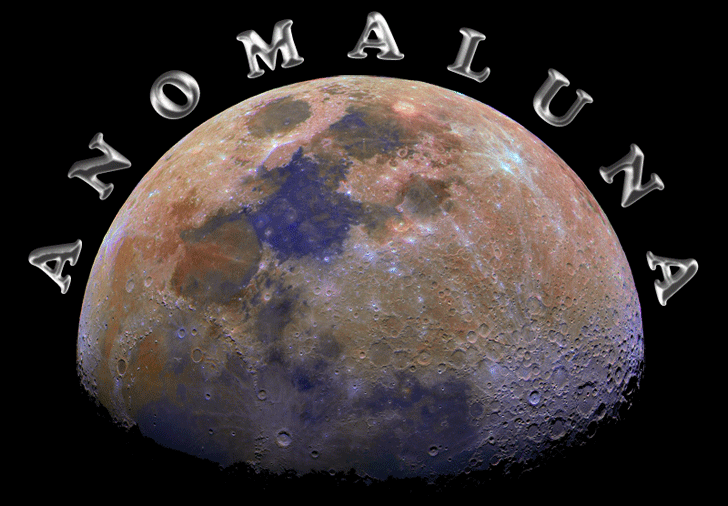 ANOMALUNA!
ANOMALUNA!  By Juan von Trillion
By Juan von Trillion Just look at it, the Moon. It should not be there at all. Level-headed people who have studied things say that the Earth's moon is the biggest anomaly of the solar system, admitting they have no clue as to why it is there. For one, it is too big a moon for such a small planet like Earth.
The duo of them is more of a bi-planetary system than a planet-plus-a-moon. A quick look at comparative planet and moon sizes in the solar system is all it takes. Moon is way too big. It should not be larger than 40 miles or so, but it is over 2,000 miles in diameter. It is the size of the US, and not the size of Maui.
Its camera was not intended for such a shot, hence it is not sharp. Still, a great image.
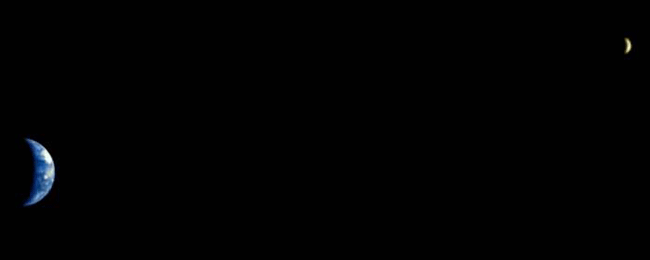
Luna moves on an almost perfectly circular orbit around Earth, not an elliptical orbit. And much too close to Earth. On top of this, it always shows its same side, with only very very slight variations. While the Moon travels once around the Earth, it rotates exactly once -- not more, not less. If it were not exactly once, we would eventually see the far side (not the cartoon), but we don't. This is, of course, how else could it be, coincidence.
Coincidence is what you have left over when you apply a bad theory.
Moon is at least 4.6 billion years old, and some rocks were announced to be 5.3 billion years old. Not only is the Moon a lot older than Earth, as measured by their best current dating methods, but there is a huge difference in age on the Moon itself which defies explanation: the dust is a lot older than the rocks. Where did the dust on the Moon come from? Not from the rocks.
(this image is stretched horizontally by some 20-30%)
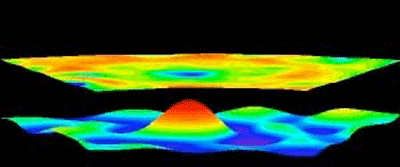
Then, there are hefty gravitational anomalies, so hefty that they have deviated space probes from their intended trajectories. It took NASA a long time to figure this out, and quite some swearing was overheard at orbit mission control. These things are ten times as strong as gravitational anomalies on Terra. They are called mass concentrations, or mascons. Above image shows the lunar terrain on the upper plane, with the lower plane showing the gravitational concentration. Yes, it looks sexy for some reason.

Almost all the mascons (80%) are on the side facing us (below left)
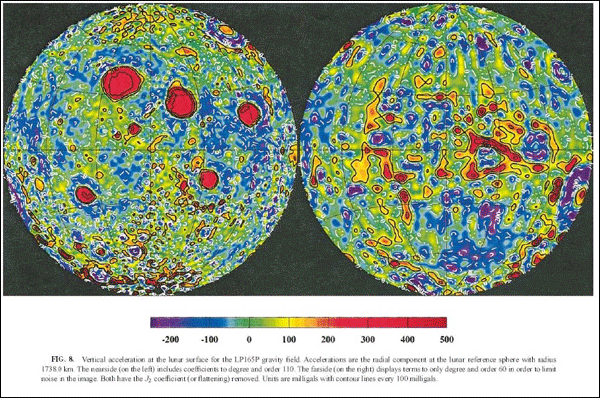
The Mother Of All Coincidences Is The Death Of All Bad Theories
For some reason, the Moon is exactly the size so as to obscure the Sun during a full eclipse. Because it is 400 times smaller than the sun but 400 times closer to the Earth. It has been called the most improbable coincidence in what we think we know of what is in the universe (this one).
Conventional textbooks ask you to believe that a massive object impacted with Terra when it was all nicely molten, and the impact split off Luna, which turned out to be exactly the size as to fit into the Sun's disc. Just as likely as the big bang: The creation of the universe from nothing, for no reason, in a single instant.
Wake up to the bedtime stories of shience and spot them all around you. This is how the disco very disco baby news tries to sell you a story akin to the Flat Earth. They also try to be funny.
"By mapping the distribution of a range of elements over a wide area of the Moon, researchers hope to test theories on how the Moon was formed. The most popular is the 'giant impact' theory, which says that when the Earth was young, around 4.5 billion years ago, a massive body the size of Mars collided with our planet. This impact flung molten debris from the mantle of both the Earth and the object which hit us into orbit around the Earth. Over the course of tens of millions of years, the debris stuck together to form the Moon. If the giant impact theory is correct there should be a high degree of correlation between the distribution of aluminum and other elements over a wide area of the Moon and the manner in which they're distributed in the Earth's mantle. Drake and colleagues are in the process of collecting the data to test the giant impact hypothesis. "One early result," he said, "is that there is no evidence for large amounts of calcium, so cheese is not a major constituent of the Moon."Notice also the clue to the ancient world, the symbolism, the mystery, the legends of the full solar eclipse. Ritual sacrifices go up everywhere, at least on Earth.
http://dsc.discovery.com/news/afp/20030929/moon.html
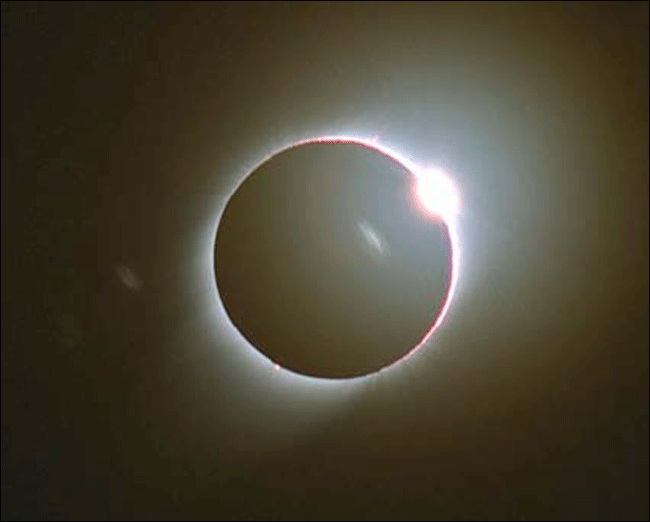
Every full solar eclipse, the ultimate design team shows off how they have left clues for those who can see them. This gets us into the Electric Universe model and plasma physics, which has been covered here at Viewzone recently.
The fantastic solar eclipse photography of Miroslav Druckmuller. You can still see the Moon's surface features during this 2009 solar eclipse image. http://www.zam.fme.vutbr.cz/~druck/eclipse/
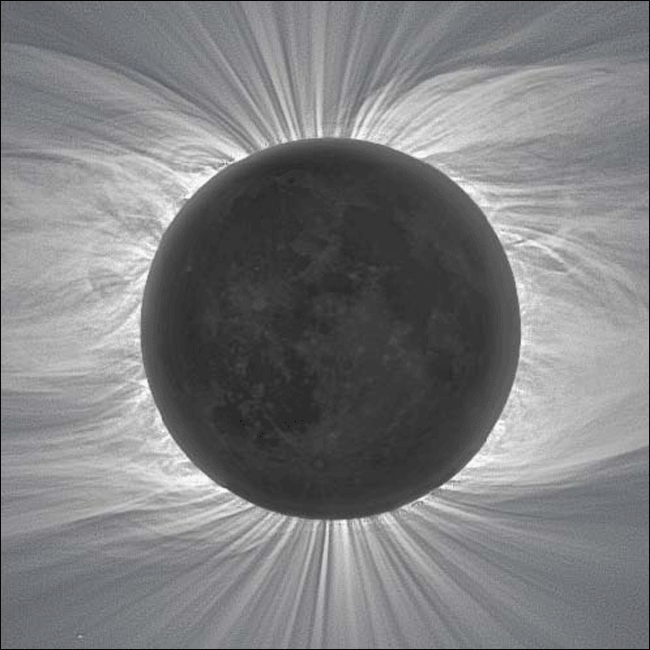
Another truly artistic thing of the Moon to do is to set at the same point on the horizon as the Sun does, but at opposite solstices. At the winter solstice, the Moon rises where the Sun rises at the summer solstice. Nobody else other than someone on Earth can appreciate this stunt.
The Sun's and the Earth's dimensions and units seem to underlie the blueprint for the Moon, which acts as a stabilizer, holding the Earth at the right angle to allow for climate seasons and keeping water liquid on most of our planet.
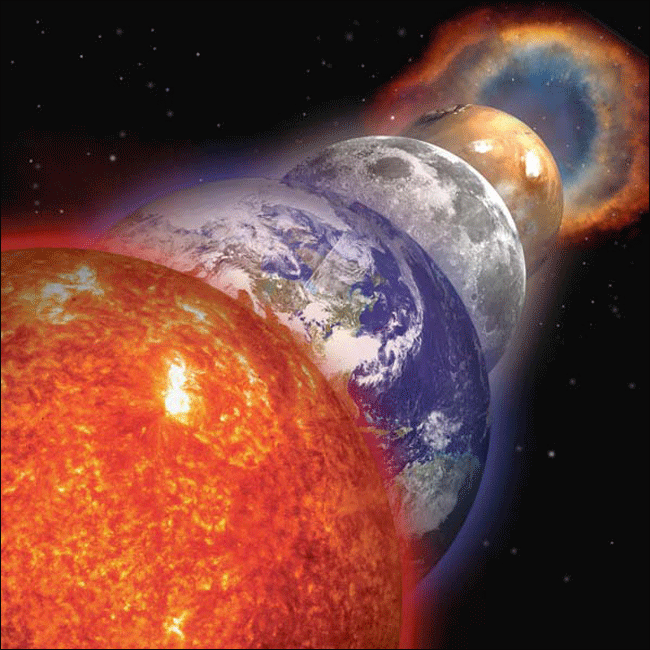
Parked Spaceship In Sky: not made of cheese but The Cheese
Luna itself is an anomaly, a big one, and from there it only gets curiouser and curiouser the more you dig into it. Since we are not wet behind the ears, let's collectively do a subversive thing and present a reverseengineered hypothesis. A hypothesis which rides this investigative horse right into consensus reality (actually, hopping right over it) and presents a fresh perspective.
We know that we can not rely on anyone to tell us the truth in case the truth is relevant to some degree. Not governments, not scientists or their colleagues over at religion, nobody except independent thinkers and researchers will present you the sheer volume of loose ends that you have to stumble over while trying to understand the world.
The other so-called investigators are shinetists, polishing their sh*t and shining their asses, who are paid while (and only while) they are shutting up, "debunking" independent research, and playing the politically correct party line. Politically Correct, by the way, is a Soviet term.
Usually, these shiny priests just ignore their open zipper and smirk.
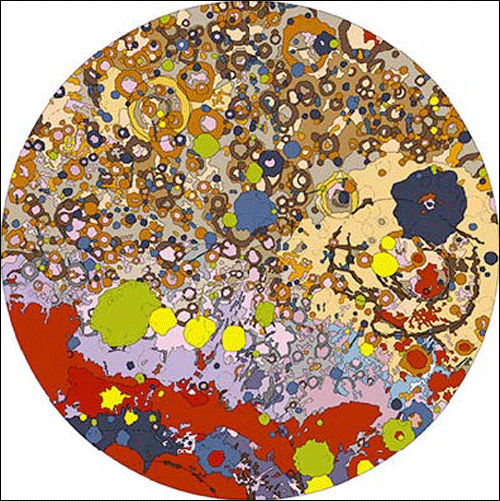
Luna was not captured as a passing-by space wanderer, and it was not made at the same time under the same basic parameters that acted upon the formation of these two solid planets. Solid they are, on their outside. We are not so sure about one, or both, being hollow.
Yes, Moon too rings like a gigantic bell after being struck by discarded rockets or meteorites, as picked up by seismographs that were left on its surface. It also has periodic "creaking at the seams", as the 20-mile thick shell plates move against each other. It is way too light with its mean density of 3.34 g/cm3, compared to Earth's 5.5 g/cm3. Large areas inside Luna must be cavities, or it does not add up.
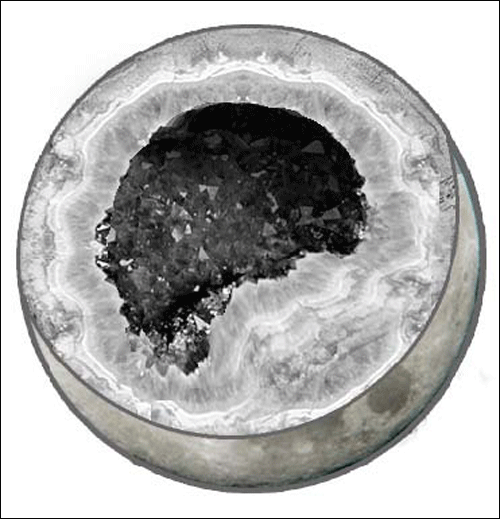
No meteorite can really smash it to pieces. Moon seems to have been towed into place through space. Without it, there would be no life on Earth as it would be a sterile habitat. Now let's not take it too personally, it was probably not placed where it is just for us, but for Terra as such. We just happen to look at it and wonder, at least some of us.
This, if true, as the evidence indicates, would mean that there is a Mighty Arranger involved. Because there are fingerprints all over the place that this is so. Douglas Adams called this guy "Slartibartfast", the unassuming, shortish, bearded planet designer in "The Hitchhiker's Guide To The Galaxy". This is likely a pseudonym.
The Hollow Moon ... Moon ... Moon ... Moon ... Moon
The larger the impact craters on Luna, the shallower they are, compared to the crater diameter. There is a maximum depth of about 3-4 miles for any size of crater, even the largest ones of 180 miles do not cave dozens of miles into the ground while impacting at speeds of dozens of miles per second. Why is this lunar surface not, after such impacts over such a long time by such large and fast and heavy objects, well ... toast?
Because where the bullet hits the 20-mile kevlar vest of spaceship Moon, it just blows to pieces, scattering the loose surface material that forms the Moon's outermost surface layer. You may know how strong a sphere is -- even an eggshell is pretty robust. Imagine how impenetrable a spherical 20-mile thick titanium shell must be.
Below is a visual rendering of lunar craters, including examples, with varying crater shapes according to their size.
(http://www.hollowearththeory.com/articles/impactCraters.asp)


Medium craters (15 - 60 miles diameter)

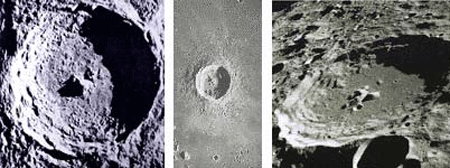
Large craters (over 60 miles diameter)


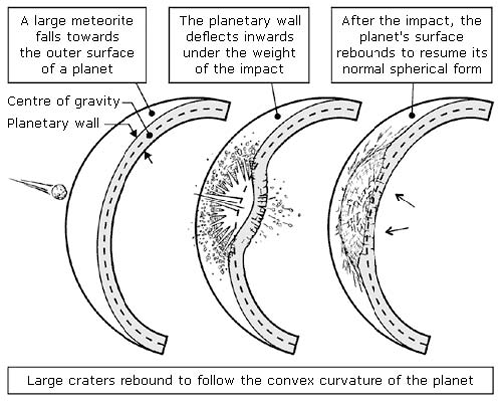
However ... we are not so sure that a massive titanium-alloy shell needs to bulge like a dented ping pong ball after impact, or that all of the craters on the lunar surface were caused by impacting meteorite bullets. Terraforming equipment would leave such debris on the surface while carving out the planet's guts. At which point it makes sense to call it a spaceship.
Let's see where the evidence leads when we visit the Moon with telescopes, cameras and landing modules -- and remote viewing. This was just the physics introduction.
===================
 ANOMALUNA!
ANOMALUNA!Why we abandoned the Moon
 By Dan Eden
By Dan Eden "I believe that this nation should commit itself, before this decade is out, of landing a man on the moon and returning him safely to the earth ... no single space project in this period will be more impressive to mankind or more important for the long range exploration of space."With his speech on May 25, 1961, President John F. Kennedy established the conquest of the Moon as a national goal. The space program, through NASA, was to have far reaching effects, developing new technologies and forcing the nation's schools to emphasize the teaching of science and mathematics. It was a dramatic cultural revolution that eventually brought us things like velcro, Star Trek and the internet.
But even before it started, our exploration of the Moon was destined to be short-lived. Despite all the promises and science fiction movies, humans would not build bases on the Moon, mine for minerals or use it as a stepping stone to other planets. In fact, the Moon would soon be forgotten and ignored by space research -- why?
Carefully Scripted
The first Moon landing by humans was in 1969 when Apollo 11 took the "giant step for mankind." The American taxpayers, who spent billions of dollars on the space program, were treated to televised interviews with the astronauts as they sped towards their landing site. Televisions were set up in classrooms and the world watched as this great event happened live before our eyes.
But years after the event, retired astronaut, Buzz Aldrin, revealed that everything we saw and heard was carefully scripted and rehearsed -- with the astronauts even using cue cards to describe their impressions of the distant Earth and the surface of the Moon! Apparently NASA was frightened that something might accidentally be revealed to the millions of viewers.
It's pretty well known that giant stage sets were constructed to simulate the Moon's surface and that models of the Lunar Module were filmed with actors wearing space suits. NASA denies that these simulations were ever substituted for the actual manned landing on the Moon. But the question persists -- why were they made?
There were six manned landings on the Moon as part of the Apollo space program. Before they landed, astronauts orbited the Command Module and took photographs of various features. While the televised interviews were carefully scripted, so were the conversations between the astronauts and Mission Control in Houston which were recorded and broadcasted on both radio and television.
But there was another tape that recorded the private conversations between the astronauts. Their observations were synchronized with a mission clock so that their exact position over the Moon could later be determined.
These cockpit tapes were transcribed following the missions and were not released to the public for over twelve years. When they were finally exposed, they revealed many of the surprises that NASA did not want the public to know.
 LMP: That's a spectacular crater.
LMP: That's a spectacular crater. CDR: Did you shoot some pictures while you were over there?
CMP: No. it's just going by -- we'd better get it later; there will be better times. If the damned antenna isn't in the way --
CMP: Boy, there must be nothing more desolate than to be inside some of these small craters, these conical ones.
CDR: People that live in there probably never get out.
CDR: Looking at the Moon hurts my head. I won't look at it. There's too much down there I don't understand.
CDR: Charlie, just keep ... on the book.
LMP: That's why I'm purging the fuel cell.
CDR: Oh.
LMP: I tell you, when we get down to 8 miles, we're gonna really look like we're down among them.
CDR: Sure are.
[Apollo 14 day 4]
CMP: Boy, I'm sure glad we cut out that TV show.
LMP: Yes.
CMP: It really worried me, when I saw where it was. Glad we got sort of a pseudoexcuse -- to cut it out.
LMP: Yes, there it is.
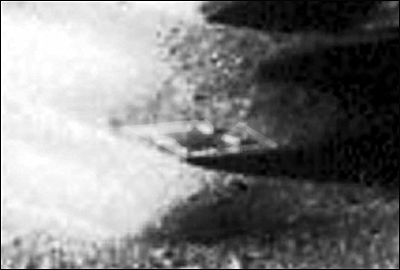 CMP: This is really something. The most unreal looking real thing I've ever seen. If that makes any sense (laughter).
CMP: This is really something. The most unreal looking real thing I've ever seen. If that makes any sense (laughter). LMP: Probably not.
CDR: ...Yes, it is ... vegetation. Something as common reference, you know -- familiar reference. So you don't know how far above you are. So it makes it look like the scale is...
CMP: There's our Loveletts again. Little Lovelett. That's oriented like that. Okay ... That is Chaplygin ...
LMP: Which one's Chaplygin?
CMP: It's off my side.
LMP: Are we headed for Mendeleev?
CMP: That should be over on your right.
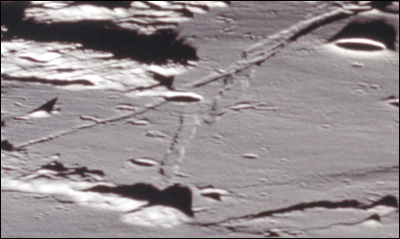 LMP: That's what I thought. Yes. There it is. The tracks are across the middle of it.
LMP: That's what I thought. Yes. There it is. The tracks are across the middle of it. CMP: Are we supposed to be doing any photography at all this?
LMP: I have got crater King out here, Stu, if you were looking for it.
CMP: Yes, that's one of our targets. That's one of Farouk's favorite craters.
LMP: Pretty damn interesting one, too. Really an interesting one. Huh? That one... looks like... got a rugged one right out here -- with the central peaks.
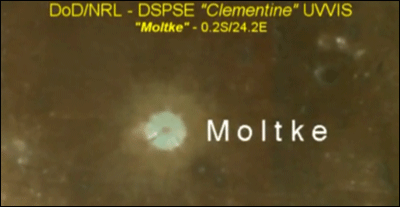 CMP: Oh God, look at that Moltke; he's my favorite... Look at that son of a bitch. You see all those roads -- triangular roads leaing right past him?
CMP: Oh God, look at that Moltke; he's my favorite... Look at that son of a bitch. You see all those roads -- triangular roads leaing right past him? [tape 17-03417/page 2]
...flowed into that little -- domical structure before the domes were built, or else -- all of that stuff that's in the mare floor has flown out of that domical structure before the domes came in. In other words, the domical structures themselves are a different time relationship to the floor itself. They are younger than the floor itself.
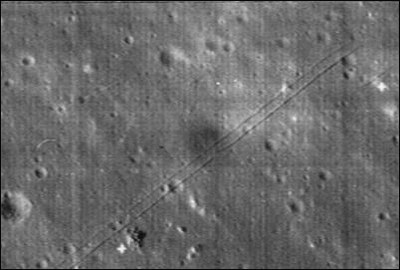 LMP: Boy, you can see Highway 1 running right all the way -- on the left -- all the way up there already. Right beyond Moltke, to the left there.
LMP: Boy, you can see Highway 1 running right all the way -- on the left -- all the way up there already. Right beyond Moltke, to the left there. CMP: Yes.
CDR: Just let's see where U.S. 1 stops up here. Here's the monocular if you want it.
...
CDR: U.S. 1 just seems to kind of die out down there.
CMP: Yes, they must have ran out of money before they finished building it.
[Apollo 11]
MISSION CONTROL: What's there?...malfunction (garble)...Mission Control calling Apollo 11...
APOLLO 11: These babies were huge, sir...enormous...Oh, God you wouldn't believe it! I'm telling you there are other spacecraft out there...lined up on the far side of the crater edge...they're on the Moon watching us... "
[Apollo 14, Day 4]
CMP: High Sun. That's one right down there; just shows how it dominates the whole phorograph. Just an extremely bright crater. Sun angle just isn't high enough for you to see it here ... Yes, they're mining it, I think.
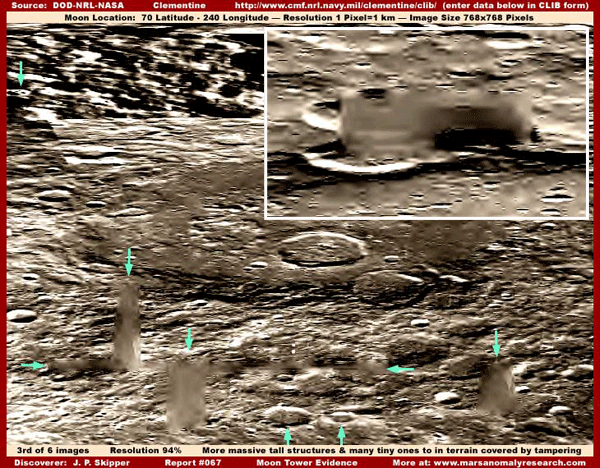 Towers, some several miles high, and complex constructions [above] were photographed on the Moon and blurred before release to the public. (thanks to http://www.marsanomalyresearch.com/evidence-reports/2004/067/moon-towers.htm)
Towers, some several miles high, and complex constructions [above] were photographed on the Moon and blurred before release to the public. (thanks to http://www.marsanomalyresearch.com/evidence-reports/2004/067/moon-towers.htm)Aliens warn: Don't Come Back!
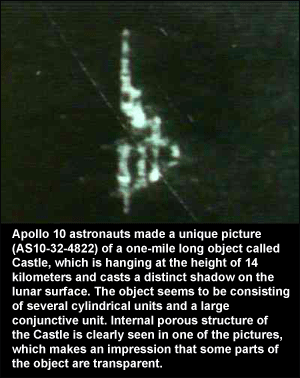 As reported on www.ufocasebook.com, a certain professor, who wished to remain anonymous, was engaged in a discussion with Neil Armstrong during a NASA symposium.
As reported on www.ufocasebook.com, a certain professor, who wished to remain anonymous, was engaged in a discussion with Neil Armstrong during a NASA symposium. Professor: What REALLY happened out there with Apollo 11?
Armstrong: It was incredible, of course we had always known there was a possibility, the fact is, we were warned off! (by the Aliens). There was never any question then of a space station or a moon city.
Professor: How do you mean "warned off"?
Armstrong: I can't go into details, except to say that their ships were far superior to ours both in size and technology - Boy, were they big!... and menacing! No, there is no question of a space station.
Professor: But NASA had other missions after Apollo 11?
Armstrong: Naturally-NASA was committed at that time, and couldn't risk panic on Earth. But it really was a quick scoop and back again.
Apollo 14 astronaut Ed Mitchell disclosed recently that "we have been visited..." and that he knows aliens exist and look pretty much like the short, thin ones in the movies. When he was asked if these were the same beings encountered on the Moon, he declined to answer.
McMoon Tapes: lost and found
NASA apparently became aware of alien visitors on the Moon shortly after taking up President Kennedy's challenge. From 1966 through 1967 they sent five Lunar Obiter satellites to circle and photograph the linar surface and select potential landing sites for the manned landings. The orbiters were very sophisticated and contained highly classified cameras which could supposedly "photograph and read a gum wrapper on a street in NY City..."
The satellites photographed the Moon, developed the film on board and then scanned the film with an analog process whose data was then transmitted by radio to Earth receivers and stored on 2-inch magnetic tape. Each hi-resolution image was 28 x 30 inches when completed.
The first three orbiters photographed the visible side of the linar surface while the last two concentrated on the far side. The photographs were scrutinized at the same time NASA was already making final plans for the manned Apollo missions. Apparently, some of the things on these images were responsible for the secrecy and theatrics that have recently been revealed.
After the final manned Moon landing on December 11th, 1972, NASA terminated the entire lunar expedition -- this despite the fact that the next Saturn V rocket, lunar module and astronauts were already paid for and waiting to be deployed. It was apparent that something -- or someone -- had warned earthlings to stay away from the Moon.
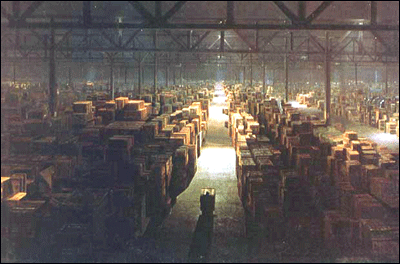
Not sure what they were, the tapes were examined by JPL and NASA and identified; but they could not be viewed because of the unique code which could only be read by an Ampex FR900 tape recorder (the first real video tape recorder) which was used to create the tapes.
An Ampex FR900 was eventually rescued from storage in a chicken coop and with some tweeking it was determined that it could read the thousands of tapes, comprising 2000 lunar images and weighing 48,000 pounds. In 1992 NASA sought funds to decode the images for historical purposed but no funding was forthcoming (no surprise). Several years passed.
A couple of years ago, a group of individuals decided to try and accomplish the decoding themselves. They apparently had enough skill to convince the JPL to release the tapes and Ampex FR900 units (they eventually found two) and all were moved to an abandoned McDonalds restaurant located on the Moffett Federal Airfield in Santa Clara County, California. Here the task of decoding the images has begun and we may soon see what forced the Moon expeditions to cease.
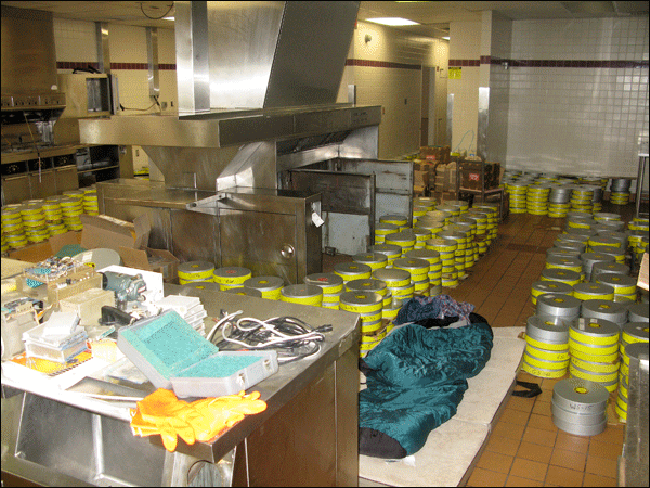 Behind the counter of an abandoned McDonalds lie 48,000 lbs of 70mm tape… the only copy of extremely high-resolution images of the moon.
Behind the counter of an abandoned McDonalds lie 48,000 lbs of 70mm tape… the only copy of extremely high-resolution images of the moon. 
[Above and below] The Ampex FR900 (restored) in operation. At the same time the last manned Lunar Mission was leaving the Moon, a man named Ingo Swann was having a secret meeting with a group of scientists at Stanford Research Institute in Menlo Park, California. He had written to the researchers with a proposal to study a new discipline called Parapsychology.
More information on this project can be found at http://www.thelivingmoon.com/47john_lear/02files/Lunar_Orbiter_Tapes_Found.html.
A meeting of minds?
Swann successfully demonstrated his own abilities at locating objects at a distance and describing them with uncanny accuracy -- a talent we now know as Remote Viewing. As the research continued they discovered an unusual phenomenon that remains a mystery -- the ability of Remote Viewers to "see" a location when supplied their geographic coordinates (latitude and longitude). The ability is remarkable even when the viewer has no knowledge of navigation or familiarity with the location. Ingo Swann seemed to be very good at this and was utilized by the CIA to describe certain secret locations inside the Soviet Union.
In his book, Penetration, Ingo Swann described how he was asked by the government to remote view some coordinates on the Moon in 1975.
After Swann had attained his mental state, the assistant Axel was told to say the word, "Moon", followed by the coordinates and he would then describe what he saw.
After mentally "landing" on the Moon, at a precise coordinate, Ingo described a pattern he saw in the sand.
What they actually look like are like rows of largish tractor tread marks. But I don't understand how this could be, so they must be something I don't understand. They are just marks of some kind. Strange, though.He was then directed to the next set of coordinates... but something seemed wrong.
I'm sorry, Axel, I seem to have gotten back to Earth here... Well, there are ... some ... I have no idea. But whatever it was it couldn't be on the Moon.After a coffee break of about fifteen minutes, Ingo and Alex got back to the task of remote viewing the Moon. Alex gave the coordinates and Igor began to describe what he saw.
Well I am in a place which is sort of down, like a crater I suppose. There is this strange green haze, like a light of some kind. Beyond that, all around is dark though. I am wondering where the light is coming from ..."Ingo suddenly jolted and wanted to stop. Alex asked him, "What else?"
Well, you won't like this, I guess. I see, or at least I think I see, well... some actual lights. They are giving off a green light... I see two rows of them... yes, sort of like lights at football arenas, high up, banks of them. Up on towers of some kind... Well, Axel, I can't be on the Moon. I guess I have to apologize, I seem to be getting somewhere here on Earth.After being reassured that his viewing was indeed on the Moon, Ingo considered that he was being asked to remote view a Russian base of some kind and that they had established an outpost on the Moon ahead of America. He was asked to continue and given the coordinates again.
There is a noise of some kind, like a thumping. I can see one of the light towers better now. Hey, it seems built of some very narrow struts of some kind, thin like pencils. Like some sort of pre-fab stuff right out of Buckminster Fuller's stuff. Let's see... hey, there are some of those tractor-tread marks everywhere. If I guess these are about a foot wide, well then, let's see, if I compute as correctly as I can, well...Ingo was then told that what he saw was real but that it was neither made by the Russians nor the United States. Without saying who made these structures, Ingo understood. Shocked, he asked for a break for the day before resuming the session the next morning.
Well, tall -- about or let's say over a hundred feet. But?... Well, I got a glimpse of the crater's edge. On it I think I saw a very large tower, very high that is. Big, really big!
Well if I compare it to something I am familiar with in New York, about as high as the Secretariat building at the United Nations -- which has thirty-nine floors in it.
Again he was given coordinates and was asked to make sketches of what he saw. He described a mining operation with domes and tubes, bridges, nets and what looked like houses. In one house he saw a kind of people.
I saw some kind of people busy at work on something I could not figure out. The place was dark. The air was filled with fine dust, and there was some kind of illumination -- like a dark lime-green fog or mist. The thing about them was that they either were human or looked exactly like us -- but they were all males, as I could well see since they were all butt-ass naked. I had absolutely no idea why. They seemed to be digging into a hillside or a cliff.Ingo then had a strong feeling of fear. He wanted to run away. One of the humanoids he was viewing had looked in his direction, as if he had sensed that he was being watched.
They must have some way of creating a good environment, warm and with air in it. But why would they be going around naked?
I think they have spotted me, Axel. They were pointing at me I think. How could they do that... unless... they have some kind of high psychic perceptions, too?At this point, Axel told Ingo to stop the session, saying that he didn't want to put him at any risk. Obviously, whoever these beings were, they were not friendly.
This is why we have not been back to the Moon.